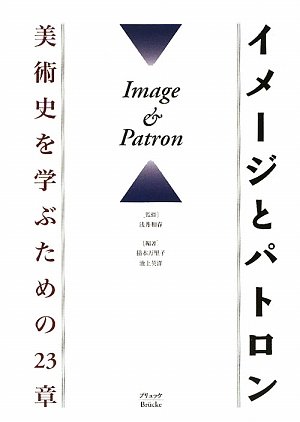1 0 0 0 イメージとパトロン : 美術史を学ぶための23章
- 著者
- 稲本万里子 池上英洋編著 佐々木守俊 [ほか] 著
- 出版者
- 星雲社 (発売)
- 巻号頁・発行日
- 2009
1 0 0 0 OA アナモルフォーズ・ヴァニタス・"cogito"
- 著者
- 池上 英洋
- 出版者
- 美学会
- 雑誌
- 美學 (ISSN:05200962)
- 巻号頁・発行日
- vol.50, no.2, pp.25-36, 1999-09-30
Questo saggio si e posto due obiettivi : 1) chiarire la funzione dell'anamorfosi come simbolo della "vanitas" ; 2) collocare questa arte nel contesto filosofico del periodo. Per il primo scopo, si e considerato il caso dell'anamorfosi di un teschio nel quadro "Gli Ambassiatori" di Hans Holbein il giovane, tenendo conto delle ricerche precedenti di Ganz, Samuel, Kemp e soprattutto Baltrusaitis. Si e quindi proceduto all'analisi delle funzioni dei tre diversi tipi di spazio simulati nel quadro. Per quanto riguarda la ricostruzione del contesto storico, si sono analizzate le teorie filosofiche del periodo, in particolare uno dei massimi esponenti : Rene Descartes. La conclusione a cui si e giunta e che, a differenza di Baltrusaitis e altri, l'anamorfosi non era piu un simbolo della "vanitas". Nella meditazione cartesiana l'anamorfosi non puo essere considerata neanche la "magia artificiale" che inganna, al di la del vero e del falso : era solamente un esempio della trasformazione dall'uno all'altro di un'unica esistenza con lo stesso valore. Questo puo essere una spiegazione del perche questa arte e stata presto dimenticata nonostante l'antica voga.
1 0 0 0 OA <糸巻きの聖母>の系統作品群について――レオナルド・ダ・ヴィンチとレオナルド派
- 著者
- 池上 英洋
- 雑誌
- 東京造形大学研究報 = Journal of Tokyo Zokei University
- 巻号頁・発行日
- no.17, 2016-03-31
1 0 0 0 遥かなるルネサンス : 天正遺欧少年使節がたどったイタリア
- 著者
- 藤田 治彦 井口 壽乃 近藤 存志 川島 洋一 池上 英洋 加須屋 明子 井田 靖子 橋本 啓子 天貝 義教 高木 陽子 高安 啓介 加嶋 章博 朝倉 三枝 三木 順子 永田 靖 塚田 耕一
- 出版者
- 神戸芸術工科大学
- 雑誌
- 基盤研究(A)
- 巻号頁・発行日
- 2015-04-01
美術、建築も含めた広い意味でのデザイン教育の歴史をおもなテーマにした国際会議、第1回ACDHT(Asian Conference of Design History and Theory)を本研究開始の平成27年10月に大阪大学で開催、平成29年9月には第2回ACDHTを東京の津田塾大学で開催した。その研究内容は同国際会議での発表論文を査読して掲載する ACDHT Journal の”Design Education beyond Boundaries”に掲載され、同国際会議ウェブサイトでも閲覧可能にしている。研究代表者と13名の研究分担者は、全員、積極的に調査研究を進めている。平成29年度は、特にインド、スペイン、ドイツ、中欧、イギリス(スコットランド)の研究成果が注目された。第2回ACDHTでは、第1回ACDHT以上に、本科研プロジェクト以外の研究発表者も国内外から参加し、このデザイン教育史研究を通じての国際交流を高めている。本研究は、各国のデザイン史、美術史、建築史等を専門とする日本の代表的研究者が研究分担者となり関連国、関連地域の独自の調査研究を進め、国際会議での発表でも高く評価されているているが、全世界を視野に入れれば専門の研究分担者のいない国や地域も多く、それが「デザイン教育史の国際的比較研究」の目的を達成するには唯一の欠点でもあった。研究代表者は、その欠点を十分に補って研究を総括する立場にあり、第1、第2年度には、担当する研究分担者のいない中国、東南アジア、インド等の調査を行い、平成29年度にはオランダと北米(アメリカ東部とカナダ)および南米(アルゼンチンとチリ)等で調査研究を行った。調査のために訪問した各国の主要教育機関からは多くの場合、重要な関連資料を提供され、旅費は必要だが、図書購入費は節約可能で、順調に調査研究を進めている。
1 0 0 0 もっと知りたいラファエッロ : 生涯と作品
1 0 0 0 OA レオナルドとヴィニョーラ : 遠近法のふたつの血脈
- 著者
- 池上 英洋
- 出版者
- 恵泉女学園大学
- 雑誌
- 恵泉女学園大学紀要 (ISSN:09159584)
- 巻号頁・発行日
- vol.18, pp.163-183, 2006-03
The architect Giacomo Barozzi da Vignola wrote his book in 1583 : Le due regole della prospettiva (The two rules of perspective). As the title of the book indicates, there were two different systems in the history of perspective : the "Costruzione legittima (the legitimate construction)" and the "Costruzione per punto di distanza (the construction with the distance point)". Both had their origins in the primitive concept shown by the great intellect in the first stage of Renaissance, Leon Battista Alberti. After Alberti, perspective was developed by uncountable theorists and artists as Filarete, Uccello, Piero della Francesca, Durer and so on. It is still widely believed that the theory of perspective was completed in the age of the high.Renaissance and the development was terminated. We know well about the history of perspective from Alberti to the high. Renaissance. But the latter half of the history has never revealed his true face. We don't know well about the intermediate steps to explain a kind of "missing ring" from the high-Renais-sance to Vignola. Leonardo da Vinci is the symbolic artist of the high-Renaissance and he is believed as the man who used perfect perspective. Yes, surely he was. The pictorial spaces created by Leonardo were good examples to see the fruit that the man had obtained by such a development. But once we start to reconsider the true practical procedures applied for his paintings in different periods in his life, such as the "Annunciation", the "Adoration of the Magi" and the "Last supper", we can notice that Leonardo had a diversity of perspective. Moreover, it is clear that Leonardo himself was still in the state of confusion of trials and errors, even though he is believed to be a perfect erspectivist. The different types of perspective in Leonardo's painting are not exactly the same as in Vignola's treatise, but we can find a suggestive relationship between them. It is also interesting to know they had actual relation through a forgotten intellectual Francesco di Giorgio Martini. This reconsideration we made will be useful to excavate hereafter the true appearance of the two genealogies in the history of the perspective and to see the change of man's conception of space.



